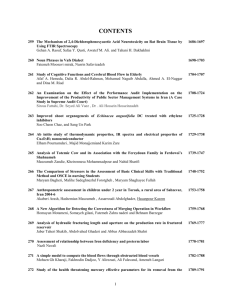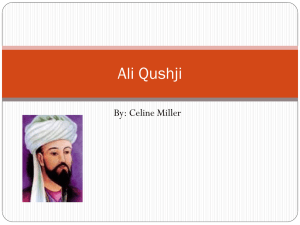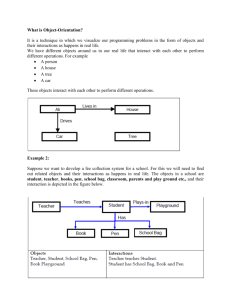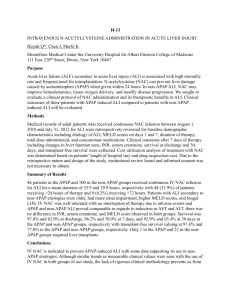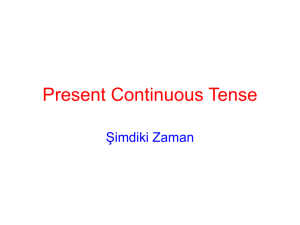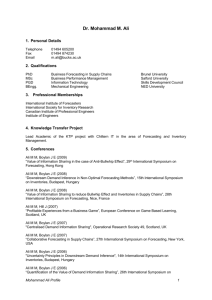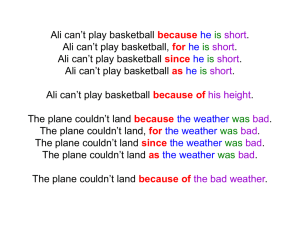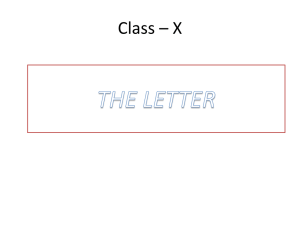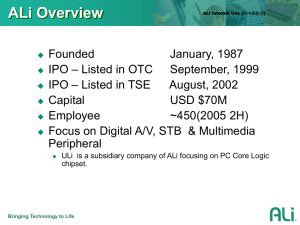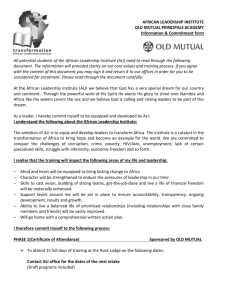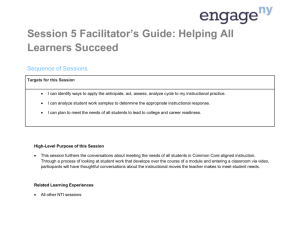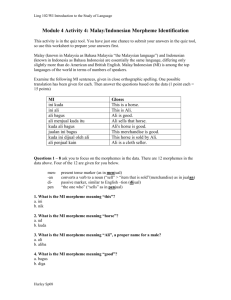File
advertisement
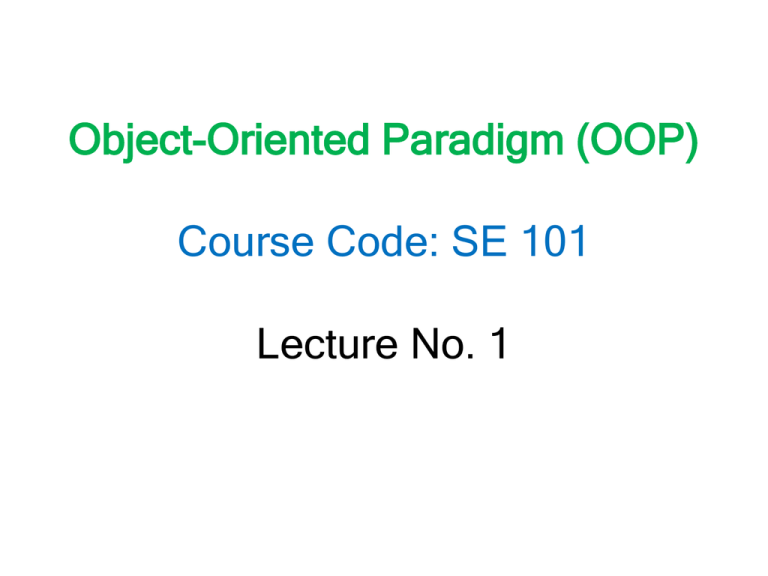
Object-Oriented Paradigm (OOP) Course Code: SE 101 Lecture No. 1 Course Objective • familiar with the concepts of – Object-oriented paradigm (OOP) • Concepts will be reinforced by their implementation in C++ Course Contents • Object-Orientation • Objects and Classes • Overloading • Inheritance • Polymorphism • Exception Handling Books • Object Oriented Programming In C++, 4/E By Robert Lafore • C++ How to Program By Deitel & Deitel • The C++ Programming Language By Bjarne Stroustrup • Object-Oriented Software Engineering By Jacobson, Christerson, Jonsson, Overgaard Grading Policy Quizzes /Assignments Mid-Term Final 20 % 30 % 50 % Object-Orientation (OO) What is Object-Orientation? • A technique for system modeling • OO model consists of – several interacting objects What is a Model? • A model is an abstraction of something • Purpose – understand the product before developing it Examples – Model • Highway maps • Architectural models • Mechanical models Example – OO Model …Example – OO Model • Objects • Interactions Ali Ali lives in drives drives – Ali – House – Car – Tree lives-in Car – Ali lives in the house – Ali drives the car House House Tree Tree Object-Orientation - Advantages • People think in terms of objects • OO models map to reality • Therefore, OO models are – easy to develop – easy to understand What is an Object? An object is • Something tangible (Ali, Car) • Something that can be apprehended intellectually (Time, Date) … What is an Object? An object has • State (attributes) • Well-defined behaviour (operations) • Unique identity Example – Ali is a Tangible Object • State (attributes) – Name – Age • Behaviour (operations) – Walks – Eats • Identity – His name Example – Car is a Tangible Object • State (attributes) - Color - Model • Behaviour (operations) - Accelerate - Change Gear - Start Car • Identity - Its registration number Example – Time is an Object Apprehended Intellectually • State (attributes) - Hours - Minutes - Seconds • Behaviour (operations) - Set Hours - Set Minutes - Set Seconds • Identity - Would have a unique ID in the model Example – Date is an Object Apprehended Intellectually • State (attributes) - Year - Month - Day • Behaviour (operations) - Set Year - Set Month - Set Day • Identity - Would have a unique ID in the model Information Hiding • Information is stored within the object • It is hidden from the outside world • It can only be manipulated by the object itself Example – Information Hiding • Ali’s name is stored within his brain • We can’t access his name directly • Rather we can ask him to tell his name Example – Information Hiding • A phone stores several phone numbers • We can’t read the numbers directly from the SIM card • Rather phone-set reads this information for us Information Hiding Advantages • Simplifies the model by hiding implementation details • It is a barrier against change propagation Encapsulation • Data and behaviour are tightly coupled inside an object • Both the information structure and implementation details of its operations are hidden from the outer world Example – Encapsulation • Ali stores his personal information and knows how to translate it to the desired language • We don’t know – How the data is stored – How Ali translates this information Example – Encapsulation • A Phone stores phone numbers in digital format and knows how to convert it into human-readable characters • We don’t know – How the data is stored – How it is converted to human-readable characters Encapsulation – Advantages • Simplicity and clarity • Low complexity • Better understanding Object has an Interface • • • • An object encapsulates data and behaviour So how objects interact with each other? Each object provides an interface (operations) Other objects communicate through this interface Example – Interface of a Car • • • • • Steer Wheels Accelerate Change Gear Apply Brakes Turn Lights On/Off Example – Interface of a Phone • • • • • • Input Number Place Call Disconnect Call Add number to address book Remove number Update number Implementation • Provides services offered by the object interface • This includes – Data structures to hold object state – Functionality that provides required services Example – Implementation of Gear Box • Data Structure – Mechanical structure of gear box • Functionality – Mechanism to change gear Example – Implementation of Address Book in a Phone • Data Structure – SIM card • Functionality – Read/write circuitry Separation of Interface & Implementation • Means change in implementation does not effect object interface • This is achieved via principles of information hiding and encapsulation Example – Separation of Interface & Implementation • A driver can drive a car independent of engine type (petrol, diesel) • Because interface does not change with the implementation Example – Separation of Interface & Implementation • A driver can apply brakes independent of brakes type (simple, disk) • Again, reason is the same interface Advantages of Separation • Users need not to worry about a change until the interface is same • Low Complexity • Direct access to information structure of an object can produce errors Messages • Objects communicate through messages • They send messages (stimuli) by invoking appropriate operations on the target object • The number and kind of messages that can be sent to an object depends upon its interface Examples – Messages • A Person sends message (stimulus) “stop” to a Car by applying brakes • A Person sends message “place call” to a Phone by pressing appropriate button
